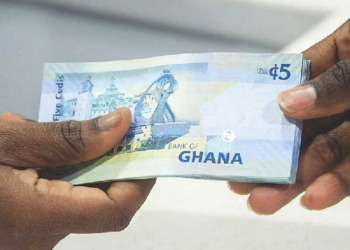Chances are good that if you’re traveling to the UK on business, you’ll want a bit of free time to explore the country’s many attractions. If so, you’re embracing the new “bleisure”, combining work and recreation.
Kevin Leung, British Airways’ Commercial Manager for Ghana and Kenya, says that increasingly, business travellers are able to get maximum benefit from their travel budgets through loyalty programmes like BA’s ON Business. This enables them to spend time exploring their destinations.
“The UK is steeped in history, so it’s small wonder that it has some excellent museums examining every aspect of its culture, technology and civilisation. But the UK is also an epicentre of museum collections from around the world. These are very different from the dingy rooms with dusty, stuffed animals and shards of pottery of the museums of yore.
Ahead of World Museums Day on May 18th, Leung suggests adding the following to your bucket-list:
Natural History Museum in Kensington, London, is vast enough to be almost overwhelming, so it has its own app to help you navigate its 36 galleries, and a network of trails if you only have time for the highlights. It’s also cleverly divided: the Blue Zone examines Earth’s diversity, including dinosaurs and human biology; the Green Zone deals with evolution, with extensive fossil exhibitions; the Red Zone examines the mighty forces that shape our Earth; and finally, the Orange Zone enables you to see scientists at work, as well as explore and relax in the museum’s wildlife garden. Entrance to most areas is free.
The British Museum in Bloomsbury, London, has 94 galleries dedicated to human history, culture and art. Its collections span more than two million years of humankind and, apart from its massive permanent exhibitions, there are dozens of special visiting displays each year, such as Iranian artwork, artefacts from the north-west coast of the USA, and landscape art of the UK. It’s also open until 20h30 on Friday evenings and offers a variety of free daily activities. Families can borrow art materials for use at the museum. Entrance to most areas is free.
The Imperial War Museums: war is hell, for sure, but conflicts also shape the world in many ways that we need to understand in order to understand the world. There are five Imperial War Museums in the UK, including HMS Belfast, the World War Two cruiser moored on the Thames River next to Tower Bridge. You can explore the vessel and its history and see how the crew coped with the often arduous conditions aboard, such as the time during which convoys were escorted through the Arctic to the Soviet Union. There’s also some quirky trivia to be learnt: for example, when the ship fired nearly 2 000 shells during the D-Day landings in June 1944, the vibrations from her 12 six-inch guns cracked the crew’s toilets. You can also find out why those guns point directly at a nearby filling-station. Admission (to toilets and ship) is free. See
Nearby, The Clink Prison explores the often grim history of crime and punishment, from its establishment in 1144. It’s become synonymous with prison itself. You can explore medieval artefacts, including instruments of torture. It’s arguably not as big on modern, interactive displays as some of its peers, but if you’re looking for a little ghoulish delight with your history, it’s worth a visit.
Still in Southwark is the Tate Modern, Britain’s national gallery of international modern art. It’s housed in the former Bankside Power Station, directly across the Thames River from St Paul’s Cathedral, and is one of the largest museums of modern and contemporary art in the world. Like all the UK’s national galleries and museums, admission to the collection displays, which comprise most of the gallery space, is free. You only pay for access to major temporary exhibitions, like the David Hockney one, on until the end of May. Entrance to most areas is free.tate.org.uk/visit/tate-modern
The Ashmolean Museum of Art and Archaeology, in Beaumont Street, Oxford, was the world’s first university museum, founded in 1683. It has exhibits dating from 8000 BC and encompasses Egyptian mummies, Minoan artefacts, Anglo-Saxon finds, as well as what’s regarded as the finest collection of modern Chinese paintings in the Western world. Also in its collection of Eastern art are ceramics, sculpture and metalwork from the Islamic world, South-East Asia, the Indian sub-continent, Japan and Korea. Temporary exhibitions include “Chinese Coins from the Scholar’s Study”, which examines the evolution of Chinese writing. Entrance is free.
Just to prove that museums need not involve urns or old maps, the National Football Museum in Manchester features a wealth of artefacts of the Beautiful Game. These include library collections from FIFA, UEFA and the FA, as well as the Hall of Fame, which celebrates the all-time greats of England. There’s no shortage of interactive displays and free football skills lessons, which have proved popular with young visitors.
The Victoria & Alfred Museum of Childhood in Bethnal Green, London, aims to preserve the recollections of childhood through extensive exhibitions, ranging from construction toys, games, models, puppets, dolls and dolls’ houses, board-games, clothing and literature. There’s also an intriguing examination of how childhood has changed through the years, in collaboration with the Children’s Commissioner for England. Entrance is free. See
The Royal Armouries, in Leeds, has a collection of 70 000 weapons and armour, ranging from a Japanese katana from 1370, to a 12-inch bronze mortar in the shape of a dragon, to an elephant’s suit of armour, and King Henry VIII’s mace. Apart from being a good way to examine the history of violence, there’s a collection of swords made especially for the Lord of the Rings Check the website for events like jousts and medieval re-enactments for kids. Entrance to most areas is free.
Not creepy enough for you? The Museum of Witchcraft and Magic in the little village of Bocastle on the North Cornwall coast claims to have the world’s biggest collection of material related to witchcraft, magic and the occult. With more than 3 000 items and 7 000 books, this might be true. The museum also offers candlelit evenings and guided walks of the coast to explore the folklore of the supernatural. Apparently the rumour that a visit by the local clairvoyants’ association was cancelled due to unforeseen circumstances is untrue, says Leung.
Join GhanaStar.com to receive daily email alerts of breaking news in Ghana. GhanaStar.com is your source for all Ghana News. Get the latest Ghana news, breaking news, sports, politics, entertainment and more about Ghana, Africa and beyond.
(Via: CitiFM Online Ghana)




